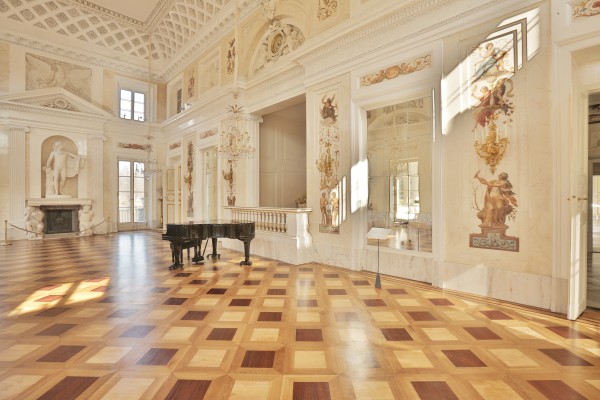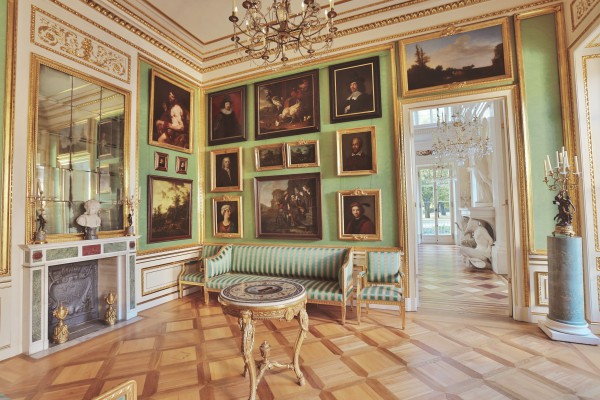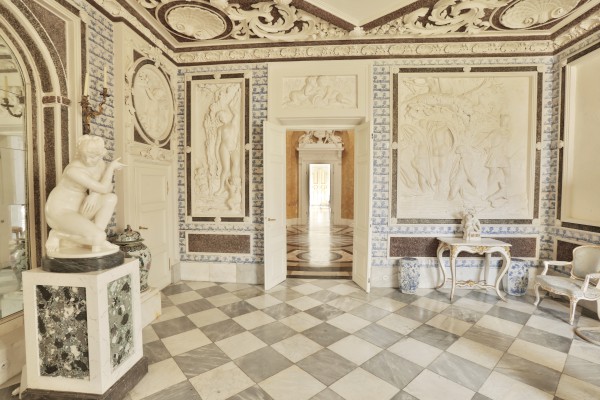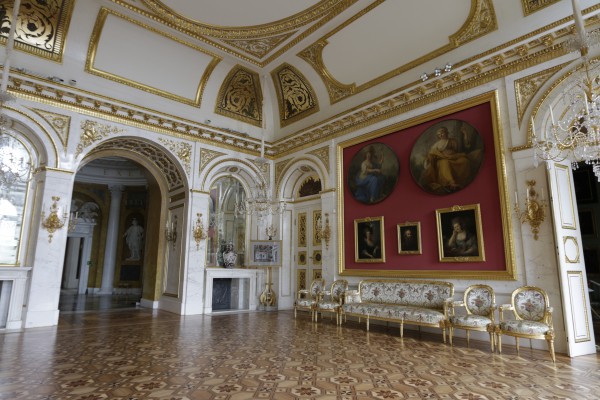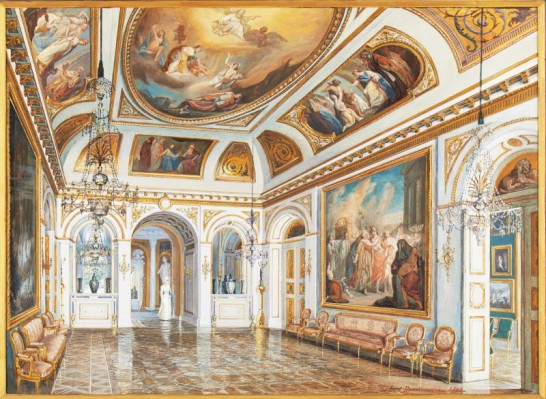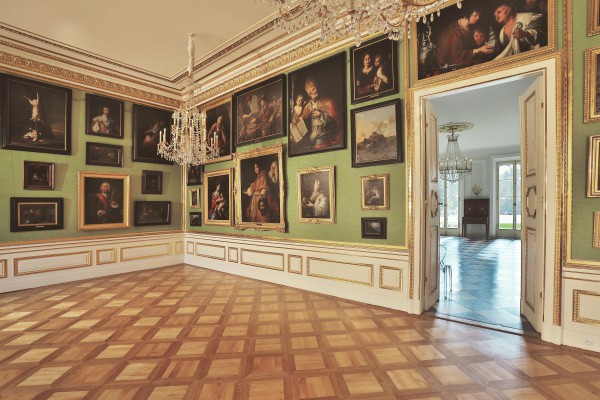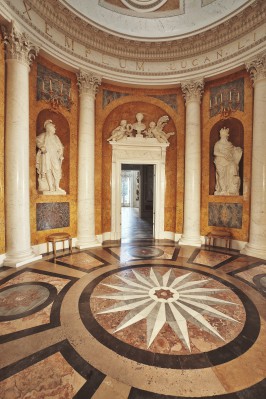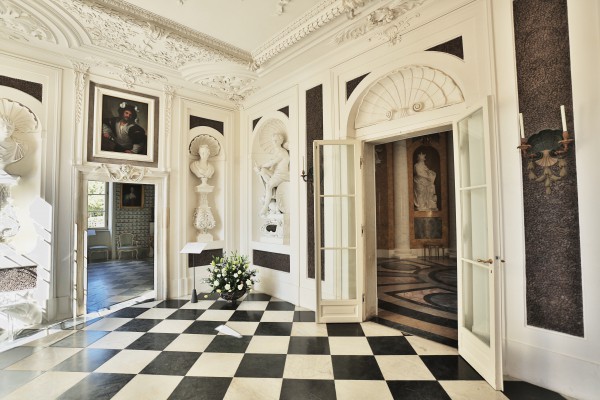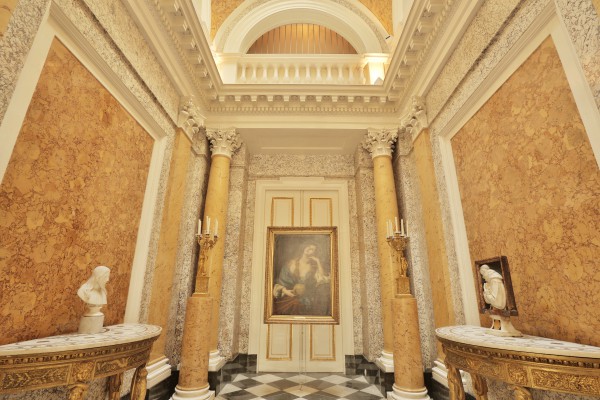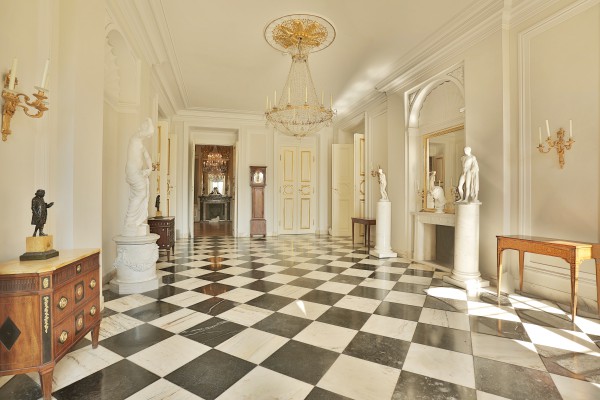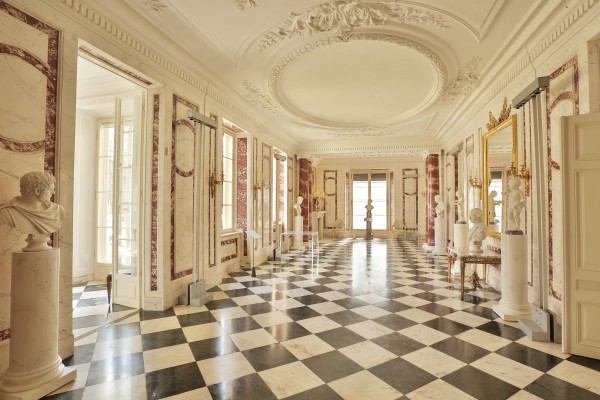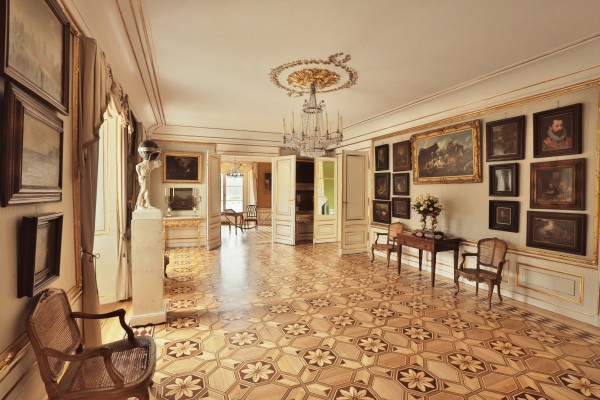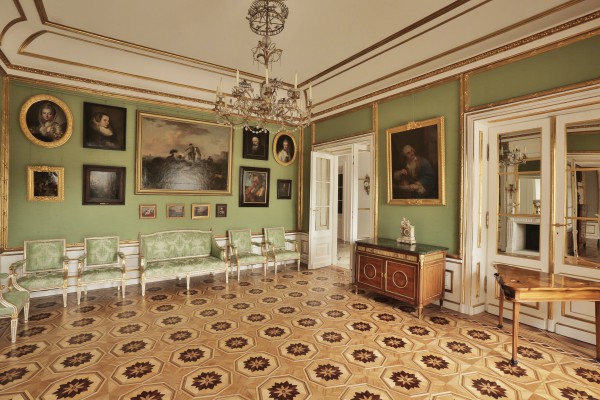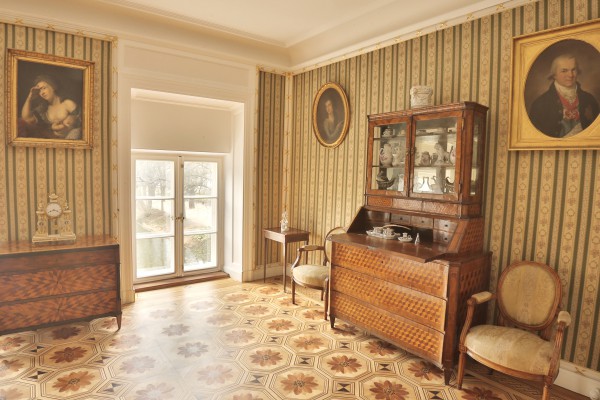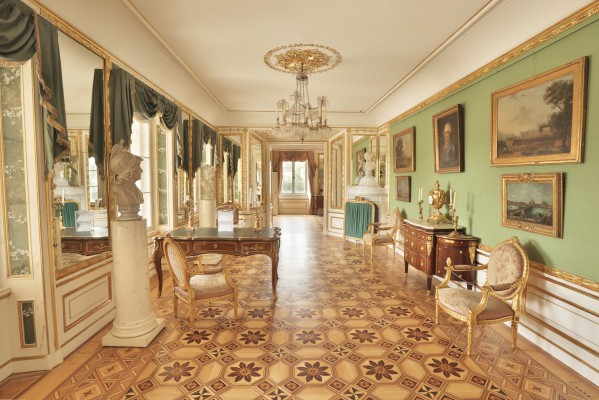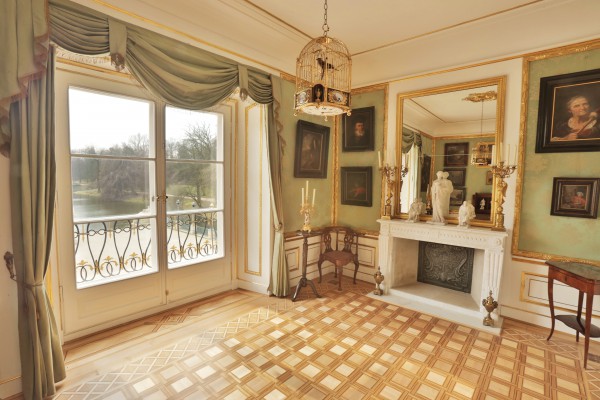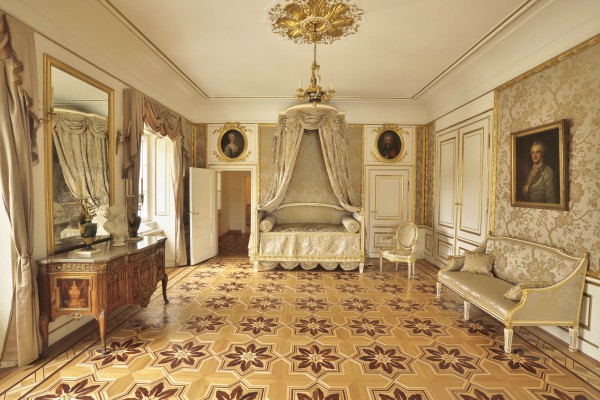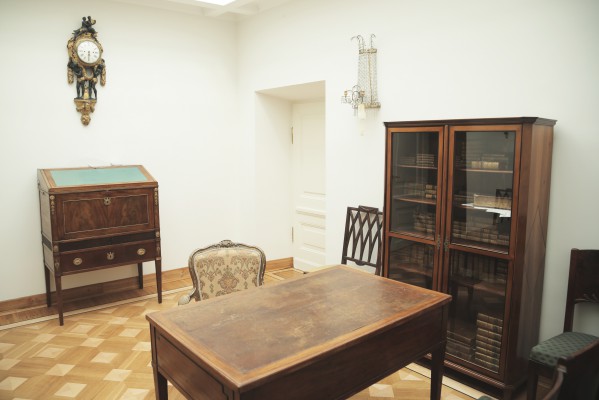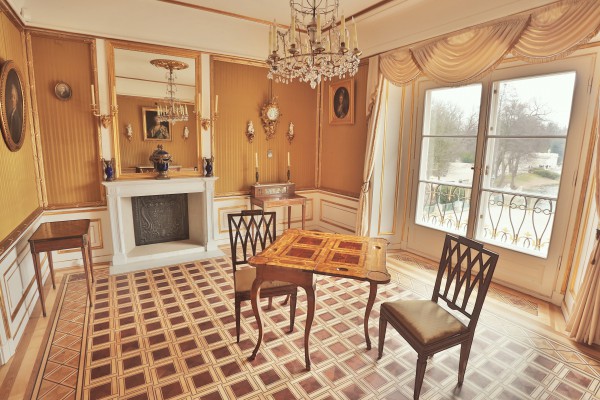
The Rotunda
It is a small, round room crowned with a cupola. It is situated in the exact centre of the Palace on the Isle. In the times of Stanisław Herakliusz Lubomirski, and at the beginning of Stanisław August’s reign, it was stylized as an artificial cave with a fountain in the middle. In the years 1788-1795, it was converted according to the design by Domenico Merlini, to which it owes a completely different appearance that has been preserved to this day.
Currently, its shape and arrangement bears resemblance to the Roman Pantheon and other religious buildings modelled on it. As a result, it fulfils the initial aim of Stanisław August, who wanted the Rotunda to reflect the character of a secular temple in honour of the most eminent Polish kings and the most distinguished Roman emperors. In the first group, the King included Casimir the Great, Sigismund I the Old, Stephen Báthory, and John III Sobieski – the monuments of these monarchs were placed in the four niches of the Rotunda, which undoubtedly echoes the Gallery of Kings in the Versailles. From the Ancient rulers, Stanisław August especially valued Titus, Trajan, and Marcus Aurelius; their busts adorn the lintels of three passages which open the Rotunda to other Palace rooms. The depictions of virtues – Justice, Clemency, Courage, and Prudence – which hang in the cupola, would watch over all leaders. Currently, they are displayed in the Salle de Salomon, and their original locations are occupied by the paintings of the Four Times of the Day. They were created in the 1870s, and when the decor and symbolic arrangement of the interior was changed, they were covered by the personifications of virtues.
The inseparable companion of the virtues, and the enemy of rulers – Envy – has also found its place in the Rotunda. It is depicted on the floor, as the Gorgon’s mask. Unfortunately, it was quickly destroyed and a star assembled of colourful marbles has taken its place. The inscription on the frieze explains the symbolic meaning conveyed with the Rotunda’s arrangement: UTILE MUNDO EDITI IN EXEMPLUM, which means: “Given as an example serving the world”. Following the last conversion, Rotunda was used as a fanciful hallway leading to the Salle de Salomon, where Stanisław August received his official guests.
